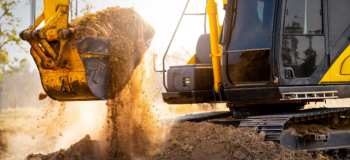11/02/2025
Insights
How to value plant and machinery equipment
Plant and machinery valuations can be complex. Many factors, such as age, condition, market demand and replacement costs, can affect the value of these assets. There are also several valuation methods you can use. That can make the process a headache for business owners, but it’s not something you can rush or avoid.
Inaccurate or outdated valuations can lead to erroneous tax and accounting declarations, insufficient insurance cover, invalid loan finance agreements, misinformed strategic decisions and asset sales at less than market value. Clearly, accurate and up-to-date plant and machinery valuations are vital, but where should you start?
What is plant, machinery and equipment?
According to RICS, plant, machinery and equipment is broadly defined as the following:
Plant
Plant is a fixed, tangible, long-term asset necessary for a business’s operations. It could be specialised buildings, machinery that forms part of a wider assemblage or industrial infrastructure such as power generation units and assembly lines.
Machinery
Machinery is an individual, system or collection of technology used in connection with a commercial or industrial process. Examples include industrial robots, conveyor belts, cranes and assembly line tools.
Equipment
Equipment is a catch-all term for other tangible, long-term assets that help to generate a financial return for the business. Fixtures and fittings, furniture, loose tools, vehicles and computers are all examples of equipment.
How often should you value plant and machinery?
That depends on the type of business you run, market conditions, regulatory requirements and how you use the equipment.
- Every year - If your business operates in a volatile market and the value of assets depreciates quickly.
- Every two to three years - For businesses in more stable markets that use their assets moderately.
- Every three to five years - For companies in more stable situations with assets they use less frequently that have slower depreciation rates.
Frequent valuations are also advisable during times of high inflation or when dealing with older assets that are nearing obsolescence.
What’s the right valuation method for plant and machinery?
There are several methods you can use for plant and machinery valuations. The most appropriate method depends on the asset type, the industry sector and the purpose of the valuation, whether it’s asset disposal, financial reporting or insurance purposes. Often, a combination of valuation methods will provide the most accurate assessment of an asset’s current value.
The following are the most common methods for plant and machinery valuation.
Income approach
The income approach estimates the value of an asset based on its income-generating potential. It’s commonly used to calculate the value of assets, such as machinery and equipment, you rent out.
Cost approach
The cost approach determines the value of plant and machinery based on the cost of replacing it with a comparable new asset. It also accounts for the asset’s current condition and depreciation. This approach is suited to newer machinery that’s relatively easy to replace.
Market approach
The market approach uses sales data to compare the prices of similar assets bought and sold recently. This approach can be useful when there’s a well-established market for similar equipment but is less suited to assets of a specialist nature.
The crucial role of professional asset valuers
Valuing plant and machinery can be complex and time-consuming for business owners. At Eddisons, our RICS-registered valuers provide plant and valuation services across many asset classes and work to the highest global standards. Find out more about our asset valuation services and get in touch if you have any questions or want to discuss your requirements with our team.
Get in touch with the Eddisons team
Please contact us for more details and information











